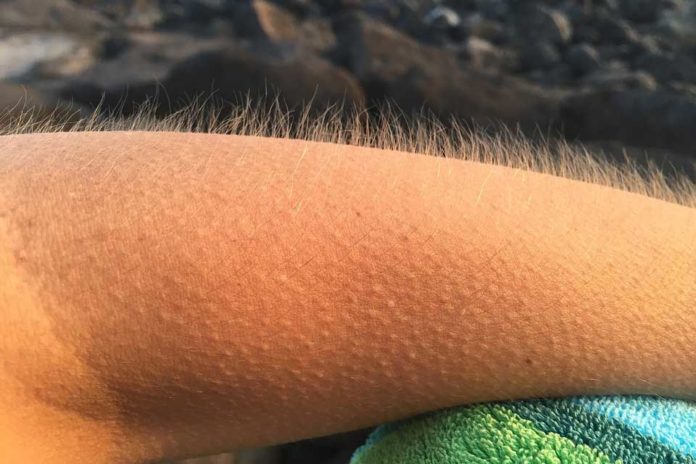Goosebumps — sometimes called goose flesh or goose pimples — are the little bumps on your skin at the base of hairs that spring up involuntarily whenever you get cold or experience strong emotions, like fear, pleasure, or surprise.
In a new study, a Harvard scientist reported that getting goosebumps makes the hair stand up and helps grow hair faster. In the unpublished finding at the joint meeting of the American Society for Cell Biology and the European Molecular Biology Organization, she reported that nerves and muscles that raise goosebumps also stimulate stem cells in the skin to make hair follicles and grow hair.
Ya-Chieh Hsu, a stem cell researcher at Harvard University, explained, “Nerves that are a part of the sympathetic nervous system — which controls pupil dilation, pulse, and other automatic processes— settle alongside organisms that make hair follicles.”
“Usually nerves are wrapped in a protective coating called myelin like electrical wire sheathed in plastic. We found that the nerves’ ends were naked where they meet hair follicle stem cells, like wires stripped at the tips to make contacts with electrical nodes.”
Hsu and her colleagues found that nerves also secrete a hormone called norepinephrine, responsible for hair growth. This finding is expected to explain why hair fall is a side effect of medicines known as beta-blockers, which interfere with norepinephrine’s action.
Hsu said, “Sympathetic nerves next to hair follicles are also wrapped around tiny arrector pili muscles, which contract to make hair cells stand on end, causing goosebumps. Mice with mutations that prevented the muscles from growing also lacked the sympathetic nerves and didn’t grow hair normally. Men with male pattern baldness also lack arrector pili muscles in their scalps.”
“Sympathetic nerves and goose-bump–raising muscles may also be important in that type of baldness. Restoring the nerves and muscles may lead to new hair growth.”
Journal Reference
- Y. Shwartz et al. Beyond goosebumps: Interactions between the hair follicle, the arrector pili muscle, and the sympathetic nerve during development and hair follicle regeneration. American Society for Cell Biology/European Molecular Biology Organization (ASCB/EMBO) 2018 meeting. San Diego, December 9, 2018.
